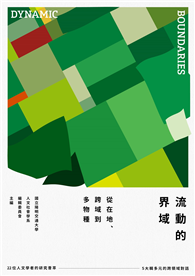| FindBook |
有 1 項符合
Mary Stuart的圖書 |
 |
Mary Stuart 作者:Stefan Zweig,Eden Paul,Cedar Paul 出版社:Plunkett Lake Press 出版日期:2017-05-11 |
| 圖書館借閱 |
| 國家圖書館 | 全國圖書書目資訊網 | 國立公共資訊圖書館 | 電子書服務平台 | MetaCat 跨館整合查詢 |
| 臺北市立圖書館 | 新北市立圖書館 | 基隆市公共圖書館 | 桃園市立圖書館 | 新竹縣公共圖書館 |
| 苗栗縣立圖書館 | 臺中市立圖書館 | 彰化縣公共圖書館 | 南投縣文化局 | 雲林縣公共圖書館 |
| 嘉義縣圖書館 | 臺南市立圖書館 | 高雄市立圖書館 | 屏東縣公共圖書館 | 宜蘭縣公共圖書館 |
| 花蓮縣文化局 | 臺東縣文化處 |
|
|
Mary, Queen of Scots (1542–1587), also known as Mary Stuart or Mary I of Scotland, reigned over Scotland from 14 December 1542 to 24 July 1567.
Mary, the only surviving legitimate child of James V of Scotland, was six days old when her father died and she acceded to the throne. She spent most of her childhood in France while Scotland was ruled by regents, and in 1558, she married the Dauphin of France, Francis. He ascended the French throne as King Francis II in 1559, and Mary briefly became queen consort of France, until his death in December 1560. Widowed, Mary returned to Scotland, arriving in Leith on 19 August 1561. Four years later, she married her first cousin, Henry Stuart, Lord Darnley, but their union was unhappy. In February 1567, his residence was destroyed by an explosion, and Darnley was found murdered in the garden.
James Hepburn, 4th Earl of Bothwell, was generally believed to have orchestrated Darnley’s death, but he was acquitted of the charge in April 1567, and the following month he married Mary. Following an uprising against the couple, Mary was imprisoned in Lochleven Castle. On 24 July 1567, she was forced to abdicate in favour of James VI, her one-year-old son by Darnley. After an unsuccessful attempt to regain the throne, she fled southwards seeking the protection of her first cousin once removed, Queen Elizabeth I of England. Mary had previously claimed Elizabeth’s throne as her own and was considered the legitimate sovereign of England by many English Catholics, including participants in a rebellion known as the Rising of the North. Perceiving her as a threat, Elizabeth had her confined in various castles and manor houses in the interior of England. After eighteen and a half years in custody, Mary was found guilty of plotting to assassinate Elizabeth in 1586 and was beheaded the following year.
“The story has all the emotional savor of a crime passionnel; it is adroitly worked up to a climax of violence and calamity, and it subsides as skillfully to an end of tragic pity... With his talent for simple exposition on a large scale, his sense of drama, his ready flow of emotion, his inventiveness in detail of the moments of his character’s life, his resources of metaphor, parallel and illustration, and his rich psychological adornment of human life, Herr Zweig has no difficulty in reducing his material into its essential drama... whatever Mary’s story, and we shall never know, Zweig’s book has every right to be set down as one of the most brilliant guesses at the truth, and it is an amazing piece of virtuosity to plunge her into the blackest of guilt, and then restore her to our sympathy and pity.” — Peter Munro Jack, ***The New York Times***
“Mr. Zweig... is not a historian but... a litterateur practising biography as a branch of letters. The distinction is not derogatory... It... is the clue to the strength and weakness of the book. The litterateur borrows from the craft and exercises some of the liberty of the novelist. He is interested in character and psychology and indulges in imaginative reconstruction more freely than the historian who is forever... haunted by the words, ‘We do not know.’... [Zweig] makes a real person of Mary, a convincing portrait, and there is sympathetic understanding even when he is presenting her as the accomplice of her lover, Bothwell, in the murder of Darnley. Needless to say the style is remarkably easy and readable... [C]riticism would be unjust to the brilliant qualities of Mr. Zweig’s book, and though I hope that all he says will not be taken for gospel truth, I am certain of the pleasure he will give to his readers. There are many descriptive passages to be scored and many sentences that one would give a great deal to have written. The whole book goes with the swing of a novel. The translation is beyond praise.” — J. E. Neale, ***The Saturday Review***
|











